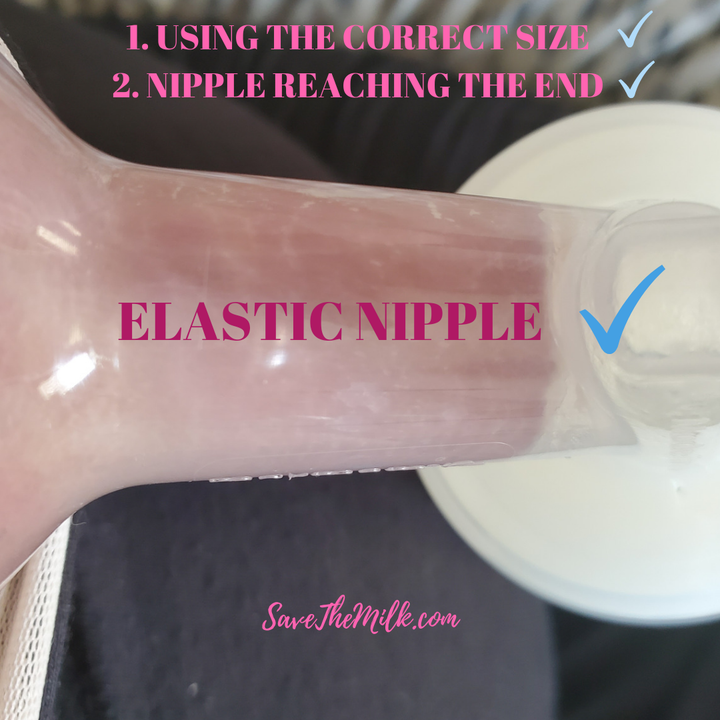
You may not have given much thought to your nipples until you decided to nurse your baby or pump breast milk. Then suddenly you’re contemplating their size, shape, colour and elasticity.
Perhaps you’ve come across the term “elastic nipples” on social media or on parenting forums and wondered what exactly they are – and if you have them.
While all nipples have some elasticity to them, elastic nipple tissue stretches more than you’d typically expect, said certified lactation counsellor and registered nurse Karrie Locher.
If you exclusively feed your baby at the breast, it may not be obvious that you have elastic nipples “because the nipple stretches and swells to fill the space between the baby’s palate and tongue,” she tells HuffPost. “We can’t see inside baby’s mouth while nursing.”
You’re more likely to notice the elasticity of your nipples if you’re expressing milk with a breast pump. Why? Because you can actually see the tissue extending all the way to the sides and end of the flange tunnel – even when the flange you’re using is the correct size. As a result, you may experience discomfort while pumping.

Note that using a flange that’s the wrong size can cause the same appearance, even if you do not have elastic nipples. “So it’s important to rule that out first,” Locher says.
Some mothers may notice increased nipple elasticity with each baby they nurse, Jan Ellen Brown, an international board-certified lactation consultant, tells HuffPost, adding that elastic nipples may be more apparent today because of the stronger breast pumps available.
Problems that parents with elastic nipples may face
Having elastic nipples isn’t a bad thing, per se, and it’s not necessarily cause for concern. You only need to address the issue if it’s making your pumping journey more difficult or painful.
People with elastic nipples may experience pain when pumping because this sensitive tissue is repeatedly hitting the end of the tunnel or rubbing up against the sides. Some women report bruising, tenderness or other damage to the nipples.
“The thin tissue at the base of the nipple may have friction and almost feel or appear like a paper cut,” says Brown, a co-author of the eighth edition of “The Nursing Mother’s Companion.” “It is difficult to heal when pressure is reopening that area [with] each pump or feeding.”
Plus, having elastic nipples may make it more difficult to fully empty the breast during a pumping session. When too much of the areola is pulled into the flange tunnel, it presses down on the milk ducts, constricting the flow of milk. Over time, this can also lead to a decrease in supply, Locher says, because milk is being left in the breasts.
Due to these issues, mothers with elastic nipples may choose to wean earlier than they’d planned, Brown notes.
How to make pumping more comfortable if you have elastic nipples
For those looking to reduce their pain while pumping, first consider reaching out to a lactation consultant to determine if you actually have elastic nipples or if your issue is strictly related to flange sizing.
“Not only will it save you money by having the correct array of flanges to try prior to purchase, but [this will] also provide comfort and enhanced milk removal,” Brown says, adding that your flange size may fluctuate over the course of your pumping journey.
Look for a professional who is knowledgeable about pumping and elastic nipples, Locher says.
“There was a time I was fitted 10 to 12 millimeters too big because of the way my elastic nipples looked when pumping,” she says.
Silicone flanges are a great option to explore – brands like Pumpin’ Pal has ones that are angled and employ longer tunnels, which may work better for people with elastic nipples.
Pump cushions are also popular among some mums with elastic nipples. These “insert into the pump flange and hold the areola from pulling into the flange tunnel,” Locher says. “They also help with comfort.” (Just be aware that using pump cushions usually decreases your flange size by about 2mm, so you may need to size-up).
Using a lubricant such as olive or coconut oil at the base of the nipple or on the sides of the flanges can also ease friction and reduce discomfort, Brown says.